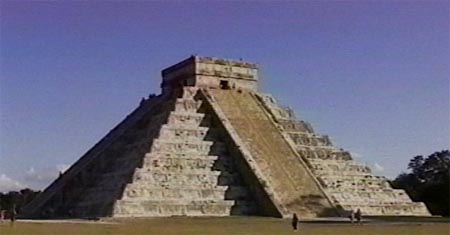Oblivious to history

Ever realize how much we don’t know? Is time a force, what is gravity and is it related to magnetism, and how do we define pain? Why do we dream? What caused the universe?
Lost in this confusion also is history. What is history? Is it remembered facts, or lengthy socioeconomic analysis? I contend that it is something more direct: repeated patterns brought about by similar actions, and the study of how their consequences beget others in the further evolution of human civilizations.
There’s a goal to history: it’s the study of us, as a species, and what worked and what didn’t and how we got where we are today, and how we’ll hopefully avoid the pitfalls of the past.
It’s not much different than a diary, except for a whole species.
Yet we turn our backs to it, mainly because few can conceptualize it and history addresses actions on a scope wider than our own mortality. Who really wants to contemplate effects 100 years from now, when we’ll all be dead? Just take what you want right now.
Yet that’s the voice of fear talking. Just fear. Our ancestors thought forward to the future, and we might as well, if we like our children and grandchildren, or just like the idea of life itself. “Life: it’s a good idea… it could be a blast! …let’s try to do it up right.”
That’s too much for most people. As a result, we constantly stumble across The Unexpected that we should have expected were we not too busy hiding from death to put up a periscope to the broader implications of reality.
Inomata is part of a team exploring Aguateca, an abandoned Maya center in Guatemala renowned for its preservation. “I should add that the identification of rapid abandonment is not easy. There are other types of deposits — particularly ritual deposits — that result in very similar kinds of artifact assemblages,” Inomata cautions, by email.
Bey and colleagues presented some of their findings earlier this year at the Society for American Archaeology meeting in Atlanta. The team hopes to publish its results and dig further at Kiuic to prove their finding of rapid abandonment there. “I think you could compare it to Pompeii, where people locked their doors and fled, taking some things but leaving others,” Bey says.
When the team started exploring the hilltop palaces, five vaulted homes to the south of the hilltop plaza and four to the north, the archaeologists found tools, stone knives and axes, corn-grinder stones called metates (muh-TAH-taze) and pots still sitting in place. “It was completely unexpected,” Bey says. “It looks like they just turned the metates on their sides and left things waiting for them to come back.”
So far, what drove people to leave the site remains a mystery, as it is for the rest of the ancient Maya. The only sign of warfare is a collection of spear points found in the central plaza of Kiuic. There are signs that construction halted there — a stucco-floored plaza sits half-complete, for example. “Drought seems more likely, that would halt construction,” Bey says.
Why don’t we ask ourselves instead: how do civilizations die, and is it a single factor?
Even a violent invader can only hold the cities; the people surge into the countryside and the culture lives on.
Spanish conquistadors met Maya descendants still living near centers in Mexico’s Yucatán in the 1500s, and today some 6 million Maya still live in Mexico, Guatemala, Belize and elsewhere. “The Maya didn’t go away, but their rulers did,” Lucero says.
It’s more likely, as we saw in Greece and Rome, that they die by a combination of factors hinged on one very simple idea: lack of cooperation.
Internal political conflicts make people indisposed to help one another, and so obligation and authority and power trump all common sense as people struggle to get basic things done. Tensions between ruling castes and worker castes come to a boil. Resentment, sabotage and inefficiency become the norm as the society appoints further management — bureaucrats — to try to tame its unruly, chaotic, oblivious population.
“Capitolio,†the new book on Venezuela by Magnum photographer Christopher Anderson, offers a stunning view into Caracas’s descent from its perch as one of Latin America’s most economically advanced, if unequal, cities into a place gripped by low-intensity chaos and fear.
Finally, add in a smattering of foreign conflicts on the level of America’s involvement in Viet Nam, a famine or a few hard storms, and everything just falls apart.
The people, already frustrated beyond words by how blockheaded their society has become, run screaming into the jungle or commit that most elegant of suicide where societies fail because their smarter people simply stop breeding, meaning that the next generation is 100% dumb and can’t maintain the infrastructure created for it.
And so you get scenes like Aguateca, where it looks like everything ceased at once without a proximate cause. For all we know, they even had blogs and CD-ROMs full of data like this blog post, but it faded away in the jungle heat and time.









